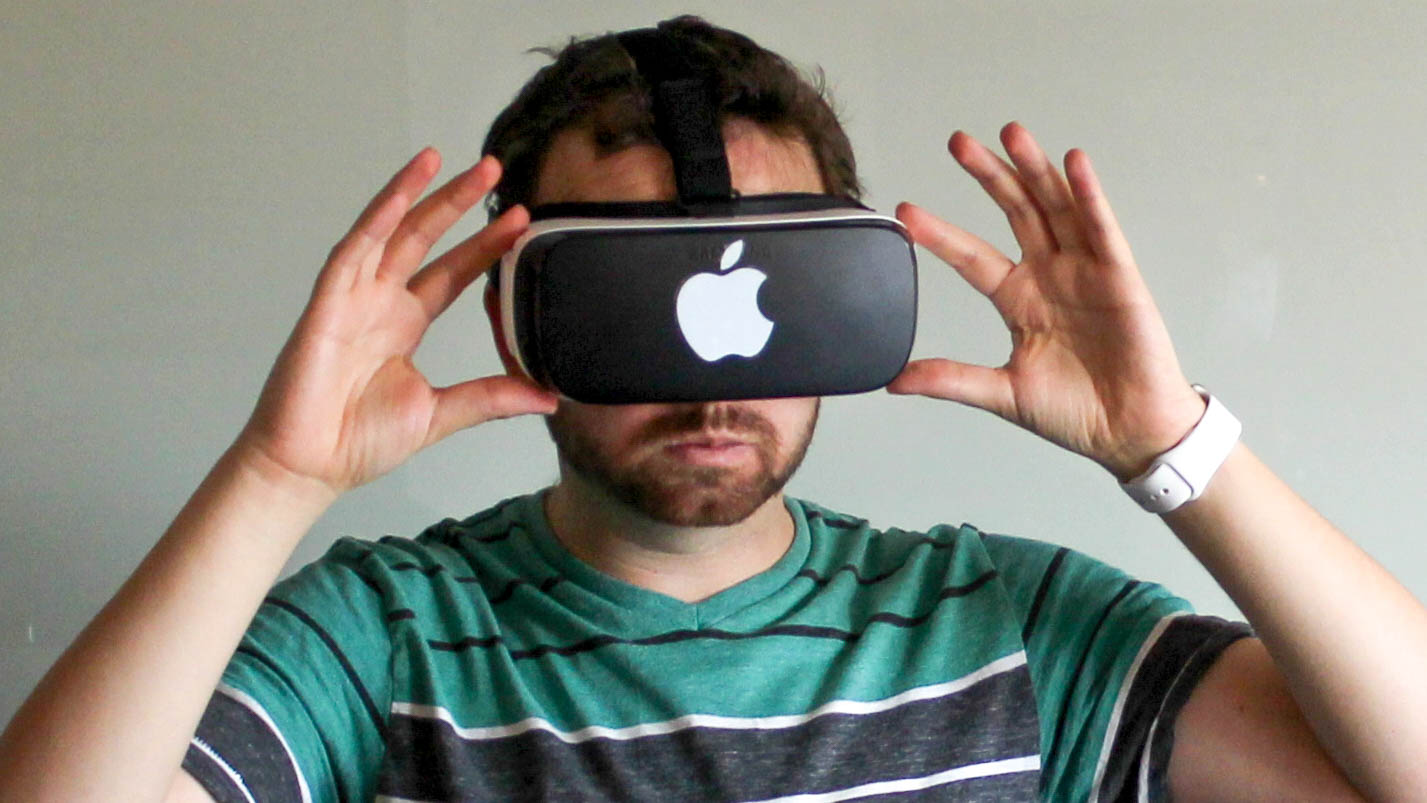Every few years, an Apple product that's not confirmed by the company, builds momentum in rumor and speculation until it’s impossible to avoid.
The iPad had it when it was rumored to be called the iSlate in 2009, while the Apple Watch was thought to be a next-generation iPod nano around 2013. The Apple headset that’s going to introduce VR and AR to its customers is the latest in these rumors of what could be launching next from Apple.
Augmented and Virtual Reality has seen huge improvements in recent years, with companies such as Oculus and Valve refining the experience and offering storefronts where you can play a variety of VR games.
But Apple has a chance to redesign its ecosystem to adapt to VR and AR in interesting ways that have not been attempted before.
A VR iTrooper

It’s not clear whether this rumored headset will both feature AR or VR features, or whether there are two headsets that will cater to each instead. But Apple has a way of adapting its apps into other devices while not compromising on features, while making them unique to the device in question.
With many operating systems ending with ‘OS’, we suspect that rOS, to stand for reality could be a good candidate for the software that the headset will run on, as it works for both VR and AR.
In previous years Apple lays down the groundwork for what’s coming, such as the iPhone for the iPad, or 3D Touch appearing in the Apple Watch and then seeing it debut in the iPhone. With this in mind, Siri could be a big hint towards what it’s planning for the headset.
Earlier this month, an Apple Music Voice Plan was released, where you can control your music only by Siri for $4.99 / £4.99 / AU$4.99 a month.
This plan could be a great fit for the headset, as you don’t need to use anything tangible to navigate your music, only through Siri. Browsing the App Store or choosing another app to use through Siri could be an intuitive way to use the headset without having to use controllers similar to the Meta Quest 2.
Spatial Audio, a feature in Apple Music again where you can turn your head and the sound will feel as though it's coming from one specific place, could also work well for the headset.
But when it comes to games, this is where the controllers would be a must and an inspiration for developers.
A VR App Store
Apps in VR are only beginning to diverge from giving short experiences like Beat Saber, to communication and accessibility such as what META is announcing for the metaverse and avatars. Seeing FaceTime VR or AppleTV+ VR is a tantalizing thought, but developers could transform the apps they already have available, into being made into a native VR headset app.
Apps like CARROT and TikTok could benefit from what the headset may offer, especially if widgets also make their debut.
What about AR?
Then there’s the aspect of AR. Augmented Reality allows you to have certain bits of digital information in a normal lens. Imagine a pair of glasses that has a section of the lens where it shows live information, such as a widget or push notifications.
This is something we’re already seeing in some apps, especially the Measure app. Others such as IKEA can allow you to place furniture in the camera’s viewfinder on the iPhone, to see if it fits your room.
There’s no reason why this headset could have both by switching modes. Seeing live widgets in a corner of a lens as you walk around your house is a tempting prospect, as it saves you from checking your phone from your pocket, or glancing at your Apple Watch.
WWDC in 2022 could showcase what developers could do with the headset, and with Apple’s Silicon chips showcasing how much power they can achieve with far less power consumption than an Intel and AMD CPU, we could see the first-generation headset feature impressive battery life for an app store that could show what AR and VR could do in the Apple eco-system.
- Our picks of the best VR headsets for 2021
No comments:
Post a Comment